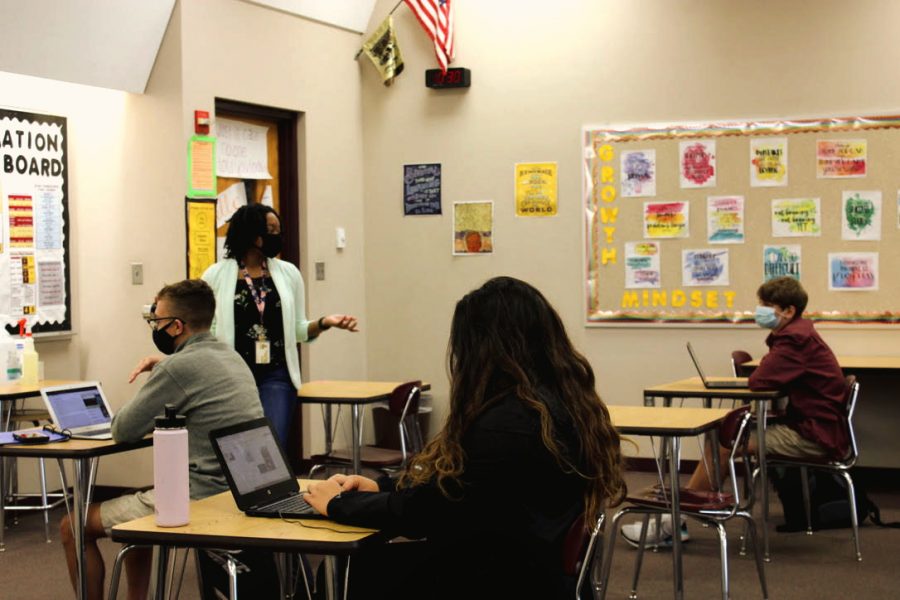CHS says ‘Hy'(brid) to 2020-2021
Students, Staff adjust to new methods of learning
CHS English teacher Ms. Riley teaches her L-Z hybrid learners.
September 10, 2020
The 2020 school year has started off much differently than any other previous years in order to combat the spread of Covid-19 among our students and staff. While half of the students spent the first day in school with face coverings and social distancing implementations, the other half spent the day working from home using their computer cameras to interact with their class virtually.
Hybrid learning has definitely been a large change for students, administrators and teachers everywhere. Many different views and opinions are circulating as to whether or not this way of learning is going to be as effective as regular learning, whether it will truly prevent the spread of Covid, and whether it will actually be beneficial for teachers and students.
“I do think hybrid learning is effective because with only half the kids at school, social distancing is actually possible,” says senior Anika Richter. “I feel like the whole environment is controlled better.”
However, sophomore Jon Coslet states, “I feel like it’s 50/50 because people that are in the school are still getting exposed to each other.”
One of the biggest concerns surrounding hybrid learning is how different everything is, for students and staff members alike. Masks are required at all parts of the day except lunch. Desks are spread out and need to be wiped down after each class. Students at home must follow along with their classes on Canvas and Google Meets.
The effect on teacher’s workloads and strategies for the school year are also vastly different. Teachers must keep both online and in person learners engaged and on the same curriculum while also enforcing social distancing. It is definitely a form of learning never seen before and for how long it will last is hard to tell.
“The most difficult part of teaching hybrid is trying to be in two places at the same time – in class with my students and online helping my remote and at home students. There has been stress, anxiety and frustration as we navigate our way through new schedules, routines and expectations, trying to learn new best practices and new curriculum [we got new textbooks this year and new state standards] but my teams at CHS and my family have been incredibly supportive which has helped a great deal,” states English teacher Jennifer Jendrzejczyk.
She also added that, “The easiest thing has been our sense of “in it together” which has built and strengthened friendships and made it easier to start building a strong classroom atmosphere. So through the Monday crazy, there is still hope and kindness.”
Altogether, hybrid learning has provided many new challenges and opportunities to the members of CHS. The 2020-2021 school year is going to be an unprecedented one and one for the history books.. We just need to make sure that our chapter ends well, by pushing forward and making the best out of our circumstances.



